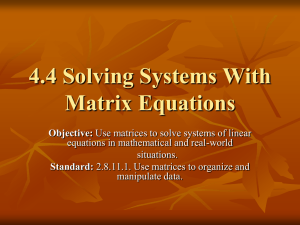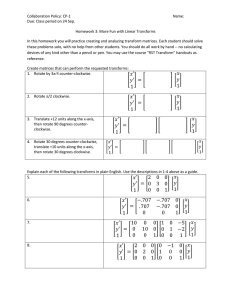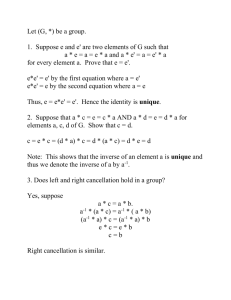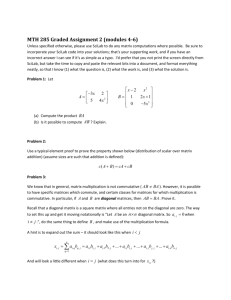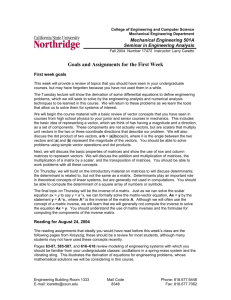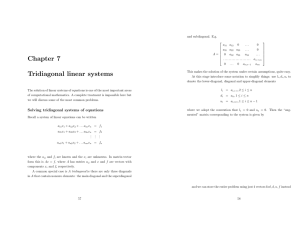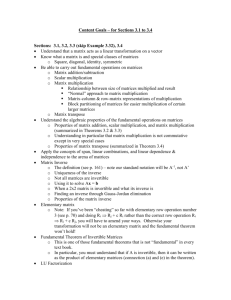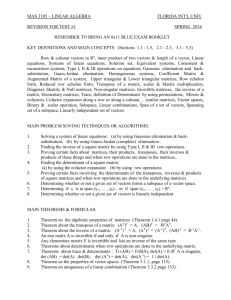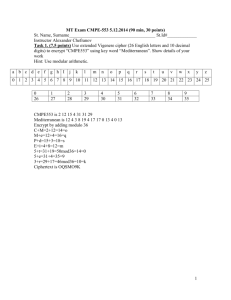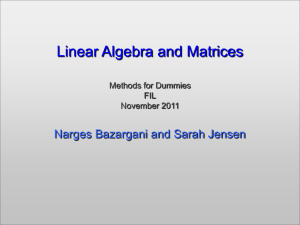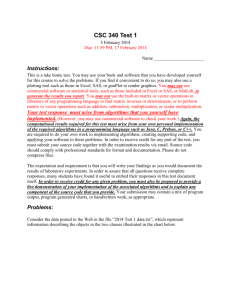Test 1 ReviewA Answers on the next page Be able to “solve
advertisement
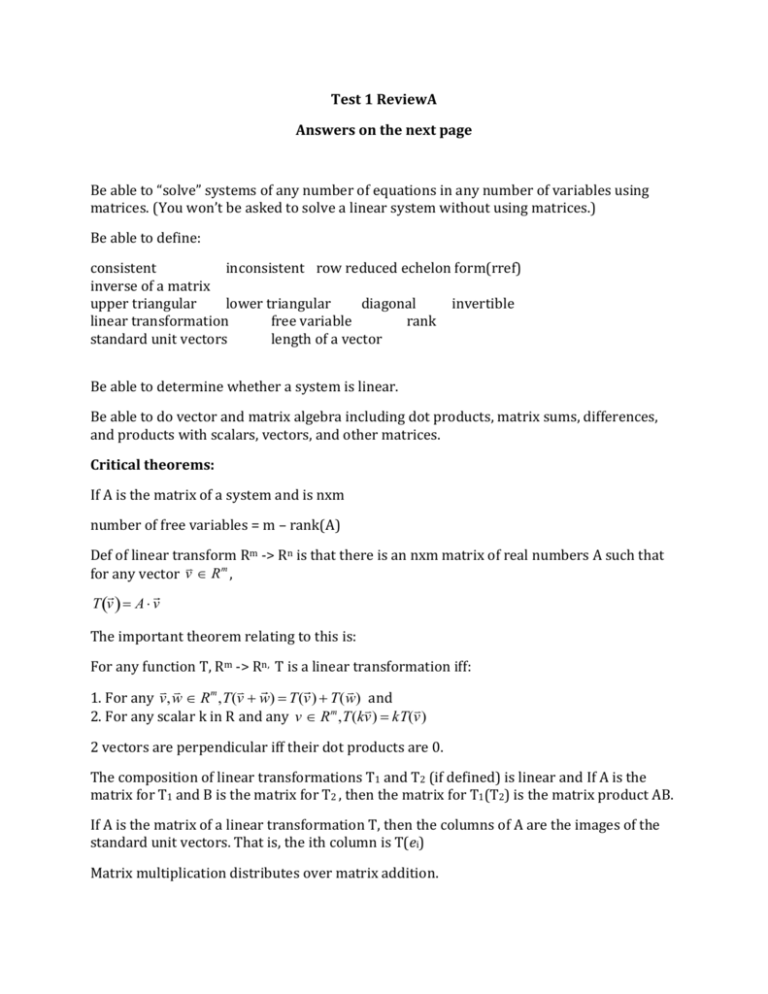
Test 1 ReviewA
Answers on the next page
Be able to “solve” systems of any number of equations in any number of variables using
matrices. (You won’t be asked to solve a linear system without using matrices.)
Be able to define:
consistent
inconsistent row reduced echelon form(rref)
inverse of a matrix
upper triangular
lower triangular
diagonal
invertible
linear transformation
free variable
rank
standard unit vectors
length of a vector
Be able to determine whether a system is linear.
Be able to do vector and matrix algebra including dot products, matrix sums, differences,
and products with scalars, vectors, and other matrices.
Critical theorems:
If A is the matrix of a system and is nxm
number of free variables = m – rank(A)
Def of linear transform Rm -> Rn is that there is an nxm matrix of real numbers A such that
for any vector v R m ,
T v A v
The important
theorem relating to this is:
For any function T, Rm -> Rn, T is a linear transformation iff:
1. For any v,w Rm ,T(v w) T(v ) T(w) and
2. For any scalar k in R and any v R m ,T(kv ) kT(v )
2 vectors are perpendicular iff their dot products are 0.
The composition of linear
transformations T1 and T2 (if defined) is linear and If A is the
matrix for T1 and B is the matrix for T2 , then the matrix for T1(T2) is the matrix product AB.
If A is the matrix of a linear transformation T, then the columns of A are the images of the
standard unit vectors. That is, the ith column is T(ei)
Matrix multiplication distributes over matrix addition.
Matrix multiplication is not commutative.
Matrix multiplication is associative.
Be able to draw a geometric representation for the sum or difference of 2 vectors.
Some example problems to try (more later):
1. Represent linear systems as matrix problems. Solve, using row reduction of the
augmented matrix the system:
x1 2x2 x3 2
2x1 7 x2 x3
x3 2x2 4x1
Solution:
Augmented matrix:
2
1 0 0
1 2 1 2
3
11
2 1 1 7Row reduces to:0 1 0 3
4 2 1 0
0 0 1 14
3
2
x1
3
11
So x 2
3
14
x3
3
2. Find the 2nd degree polynomial f(x) with f(1) = 2, f(2) = -1 and f(-1) =2
So
f (x) ax 2 bx c
f (1) a b c 2
f (2) 4a 2b c 1
f (1) a b c 2
Solve the system of 3 equations in a,b,c. Get a = -1, b = 0, c = 3
f (x) 3 x 2
3. Make up any 3x3 matrix A. Find its inverse A-1 . (OK, so it can’t be just any A)
Show A-1A = AA-1.
Answer depends on the A you pick.
4. Prove that if A is an invertible nxn matrix and suppose that B is some nxn matrix such
that AB=0. Show B = 0.
Proof: Since A is invertible, we know A-1 exists and that A-1A = I Start with the equation
AB=0 and multiply on the left each side by A-1
A-1(AB) = A-10 = 0 since any matrix times the 0 matrix is 0.
By the associative law of matrix multiplication, note A-1(AB) = (A-1A)B
By the definition of inverse, (A-1A)B = IB and note IB = B
By transitivity of =, the last several lines tell us:
B = IB = (A-1A)B = A-10 = 0
2 3
5. Find all matrices that commute with
3 2
b11
Hint: Let B =
b21
b12
2
Write out the components of B 3
b22
3
2
2 3
and the components of
are expressions.) Set them equal. Solve
B. (The components
3 2
the 4 equations in 4 unknowns. The result is that B must have equal diagonal entries and
the off diagonal entries must have same absolute value and opposite signs.
6. You ask Mathematica to RowReduce an augmented matrix and it returns:
{{1, 0, 0, 1, 1}, {0, 1, 0, -3, 2}, {0, 0, 1, 2, -3}, {0, 0, 0, 0, 0}}
What’s that mean?
The original system has a free variable x4 and the solutions system is:
x1 1 x4
x2 2 x4
x3 3 2x4
